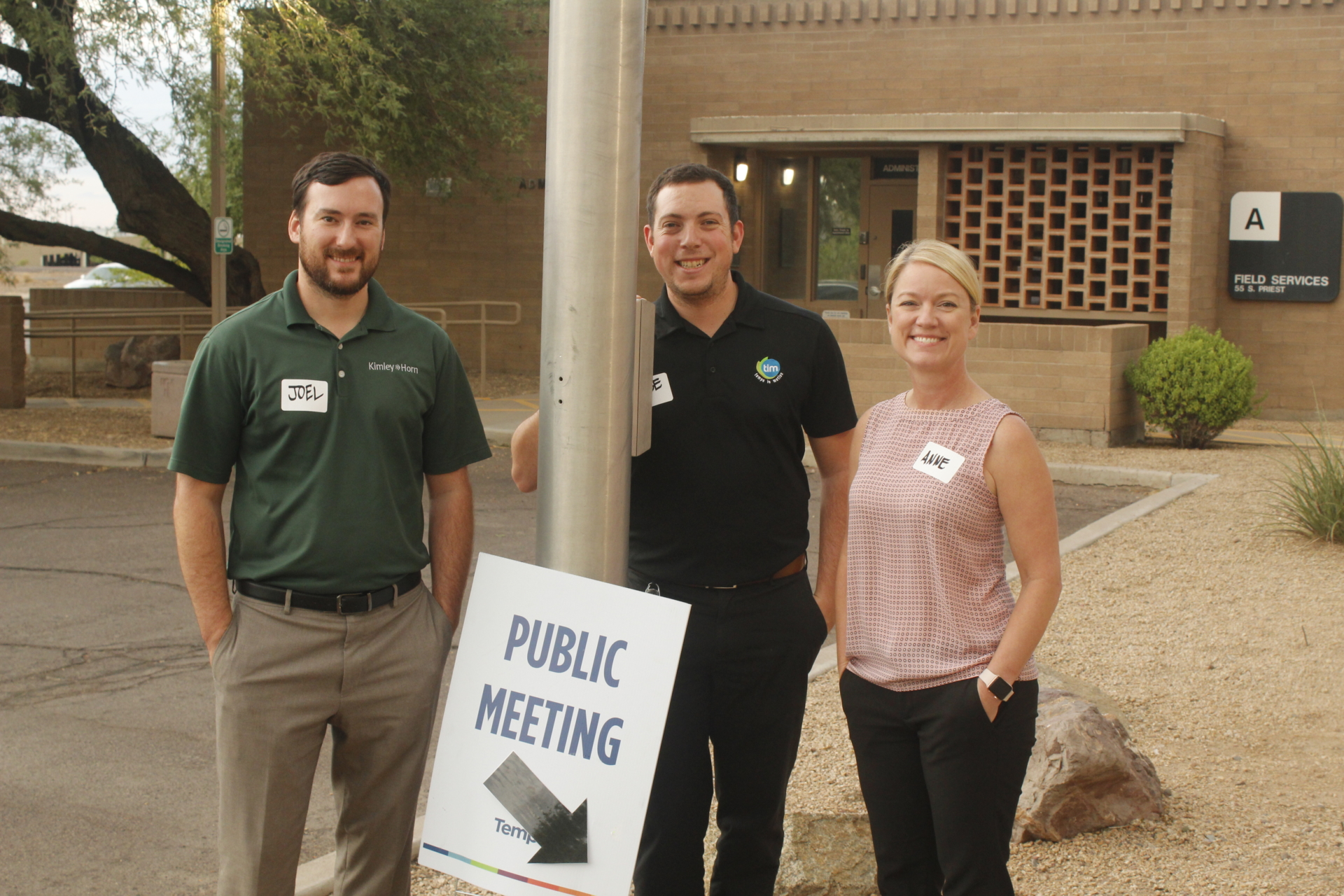Safety, comfort, and security are the three reasons Anne DeBoard, a project manager at Kimley Horn, supports the Grand Canal project for the city of Tempe.
With this project, the city of Tempe’s goal is to design a feasible connection between the Rio Solado North Banks and the Grand Canal.
The project is extensive and has been proposed in two phases.
Phase I focuses on completing the 800-foot gap between the cities of Phoenix and Tempe along the Grand Canal. City council meetings for Phase I were held on May 8 and 11.
Phase II connects the Rio Salado multi-use path to the proposed Grand Canal path, and meetings for Phase II were held on Sept. 14 and 16.
The proposed updates include concrete multi-use paths, updated lighting and increased signage and landscaping to help make commuting amongst this path safer for Tempe’s citizens.
One way this will be done is by expanding the sidewalk path on North Priest Drive. Right now, the sidewalk is 8.5 feet wide, but to be considered a multi-use path, it must be 10 feet wide.
“This will allow for safer transportation in both directions,” DeBoard said.
In addition to re-landscaping paths that already exist to make them safer, the city of Tempe plans to construct new paths to develop safer connections between commonly biked areas.
“The 202 freeway is massive and in the way, so we plan to establish the Rio Salado and Grand Canal path system to establish a safe and comfortable connection between the two since there is not one already,” DeBroad said.
All of these proposed changes are part of the Grand Canal multi-use path project which was first identified in the Tempe Transportation Master Plan of 2015. According to the City of Tempe Transportation Planner Chase Walman, most projects look toward the transportation master plan to provide recommendations for the future.
“The Grand Canal project is one of the short term improvements identified as a public priority by the Transportation Commission board,” Walman said.
Neighborhood services specialist, Laura Kajfez, said the city can expect to see this project completed in approximately 5 years. “We had to cover our bases as far as getting public input and doing a study session, so it’s a long but worthy process, ” Kajfez said.
One non-profit community organization that supports the Grand Canal multi-path development plan is the Tempe Bicycle Action Group.
The organization was established in 2008 with the mission to improve bicycling for Tempeans and valley residents. Examples of what they do include hosting community bike rides, installing local bike racks, and petitioning the city government for improvements to bicycle infrastructure.
“Not all of our bicycling friends are comfortable riding on a busy street even if it has a buffered bike lane, so having alternatives for recreation and transportation is very important,” T.B.A.G Treasurer, Jeff Caslake said.
Calaske and the organization support increased bicycle access and are looking forward to getting more infrastructure developed for bicyclists.
“Having a friendlier, low-stress route to connect to Phoenix along the grand canal would be amazing,” Calaske said. Calaske believes the new Grand Canal multi-use path project will fix the gap in connectivity in the multi-use path network in Tempe.
“For the Tempe city council, we believe that the issue of sustainability is important to our staff and citizens, and eventually that transfers down into actions,” Kajfez said.
The Grand Canal multi-use path is one of Tempe’s sustainable efforts this year, as well as being named the first Vision Zero city in all of Arizona. With Vision Zero, the city of Tempe hopes to achieve road safety for all users, and through the Grand Canal project, Tempe can make the roads safer for bicyclists.




